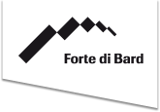“Pablo Picasso. The colour etched” exhibition is the most important retrospective about the linografie production ever built in Europe by the Spanish master, due both to its breadth and quality value of the works. Pablo Picasso is the artist who brought the art of printing linocuts at the highest stylistic levels.
Inside the Cannoniere are displayed about 140 works, with a core dedicated to the great themes of the Mediterranean Culture (Arcadia, the Minotaur, Mythology) testifying the path of gradual acquisition by the artist: from the first tests up to the stylistic zenith in 1959, with the masterpieces Faun and Satyr and the copy of Lucas Cranach the Younger Portrait of Young Woman. It is also exhibited a complete sequence of eleven trials with colour variations on the theme Bacchanalia with bull which testifies the vitality and the virtuosity of the creative process. The themes of the first productions, such as bullfighting, bacchanalia, still lifes are joined by heads of women, figure studies, portraits and by the famous variations from past masters (Cranach, El Greek, Ingres).
The production of linocuts fits into a broader activity in the field of graphics, in which he is engaged as an illustrator, draftsman, engraver and printer. His interest in printing linoleum began in 1939, after settling in the south of France. He began to explore the power of this technique, through which he developed procedures ever attempted before and obtaining large-format works characterized by an increasingly rich and vibrant range of colours.
An interesting comparison is given by the dialogue between graphic art and ceramics, from the Museum of Vallauris, realized in parallel by the artist. The exhibition also features thirty photographs taken by David Douglas Duncan, an American photojournalist and one of Picasso’s friend. He will become one of his favourite photographers.



